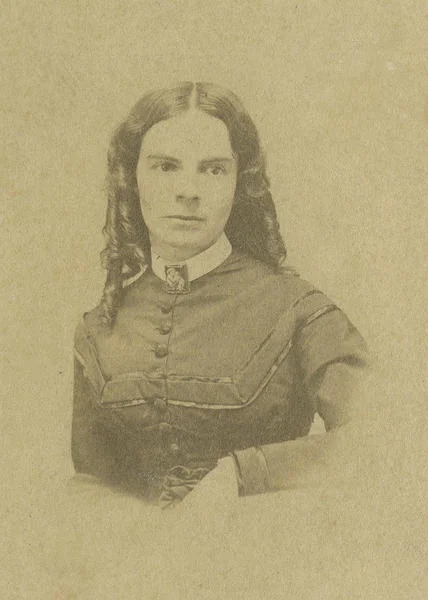If you live in Bloomington, Indiana, there is a good chance that you’ve heard of Sarah Parke Morrison, the first woman to attend Indiana University in 1867. Being the first to break any barrier is an achievement, but Morrison would go on to break two more barriers at IU, becoming both the first woman to graduate with a degree from IU in 1869 and the first female faculty member at IU. She accomplished more than those three firsts, though.
Indiana University Archives
Morrison was born on Sept. 7, 1833, to John Irwin Morrison and Catharine Morris, the first of their two children, both daughters. Her parents were strong supporters of women’s right to education and to holding positions within educational institutions. They encouraged both of their daughters’ education through homeschooling and formal training, but Sarah continued well beyond the education level of most women of her class.
Morrison first went to Mount Holyoke Female Seminary as it was expanding from a 3-year to a 4-year program under principal Mary W. Chapin. The seminary did not create ministers or chaplains, but its curriculum was modeled upon men’s colleges. The 16-hour daily schedule at Mount Holyoke included studies equivalent to men’s programs as well as domestic work, exercise, and religious devotions. The academic program included a minimum of seven courses in the sciences and mathematics, including lab work, unheard of before the school’s creation. Morrison graduated in 1857, but it wouldn’t be until 1888 that Mount Holyoke could officially grant college degrees.
Morrison next went to newly founded Vassar College, where, according to Dean Rogers from the Special Collection at Vassar, she was enrolled as a “special student” in its preparatory school from 1865 to1866. At that time, she would have studied Latin, ancient history, physical geography, botany, rhetoric, algebra, and a second language—French, Greek, or German, though we do not know which language Morrison chose to study.
While unable to earn degrees because of sexist academic accreditation of schools, Morrison still finished multiple academic programs in liberal arts, science, and business from these institutions. She went on to work as a tutor and to hold administrative positions at State Normal in Terre Haute, Glendale College in Ohio, the University of Chicago, and Western Seminary in Oxford, Ohio.
In 1867, the Board of Trustees of Indiana University made a decision to admit women using the same criteria used to admit men, making it the fourth public university in the nation to do so. Since Morrison’s father was an IU Trustee, she knew about this change, but at the age of 34, she wasn’t interested. When no other women applied, Morrison followed her father’s desires, applied, and was admitted. Her presence opened the door further, and by 1868, six to eight more women were enrolled. Women continued to come to IU, and by 1899 they accounted for 30 percent of the student body.
Morrison graduated with an A.B. in 1869, completing a four-year degree in two, going on to earn an A.M. in 1871. Morrison was hired by IU to be a tutor, then an adjunct professor in the English department, where she worked from 1873-75. A short-lived newspaper called The Dagger, published by IU’s Beta Theta Pi fraternity members from 1975-1880, mocked her by calling her “Queen of the University” and expressing the opinion that she had accomplished nothing to qualify her as a member of the faculty. The year The Dagger folded, five more women would graduate from IU.
Morrison also published books outside of academia. Her father died in 1882, and his memory inspired a collection of verses, A Monody: To a Father’s Memory, published in 1891. The poems feel much like they could have been a part of Morrison’s grieving process, each one inspired by events from her life with her father and moments after his death that drew her thoughts back to him. That same year, a narrative biography Morrison wrote about her mother’s family, titled Among ourselves: to a mother’s memory, was published. Short collections of her poetry, and even a song were published during her lifetime.
Years after leaving IU, Morrision was known for her letter to the Board of Trustees asking why women were not yet appointed and often marking her election ballots for that body as “for some woman” as a protest. She was also a religious woman who was part of the temperance movement, following the example of her mother.
Indiana University Archives
Morrison lived out her post-faculty life with her sister, Annie R. Coffin, in Indianapolis, until July 9, 1919, when she died from the after-effects of a paralytic stroke. Earlier that summer, the house in which the two sisters lived caught fire.
Decades after her death in 1942, IU renamed part of the Wells Quadrangle Morrison Hall in her honor. In honor of her groundbreaking status for women at IU, in 2005 the Office of Women’s Affairs created the Sarah Parke Morrison Society Scholarship to recruit Indiana women into the computer science program.



